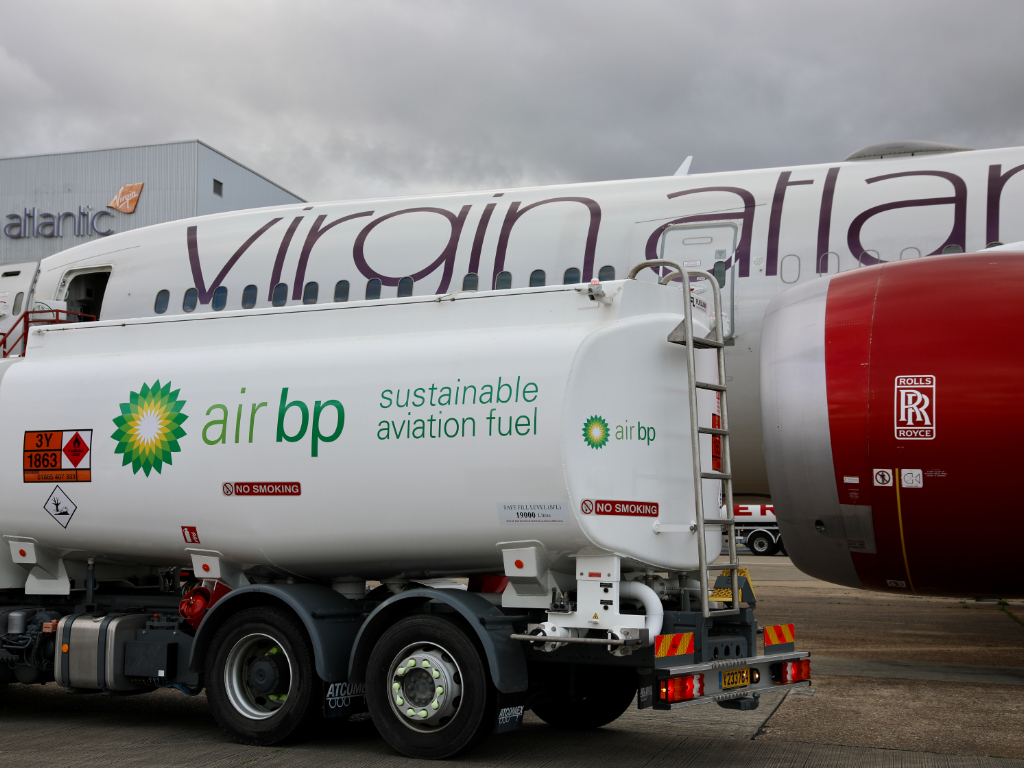SAF. What is it, and why is everyone talking about it?
The climate crisis is the single greatest challenge of our lifetime. The way we travel must evolve faster than ever before so we can continue to experience the world we love for generations to come.
First, we're focusing on making our fleet and operations more efficient - but that only gets us so far. For over 15 years, we’ve championed the development and use of Sustainable Aviation Fuel (SAF). In 2008, we were the first airline to test the use of SAF in a commercial aircraft and then in 2018, we operated the world’s first passenger flight using a blend of SAF and traditional jet fuel. In 2023, we became the first commercial airline to fly across the Atlantic using 100% SAF.
But what is SAF and why is it better for our planet?
What is Sustainable Aviation Fuel (SAF)?
SAF is made from biomass feedstocks which can range from used cooking oils and animal fats to waste paper, wood and plants, or even conversion of industrial waste gasses from processes like steel making. That means it’s made from biomass that has already captured atmospheric CO2. So, while SAF generally emits the same CO2 during combustion, it’s recycling CO2 that’s already been produced rather than releasing new CO2 like traditional jet fuel, so reducing the emissions across its lifecycle.
SAF typically reduces CO2 lifecycle emissions by more than 70% compared to traditional fossil fuel1 and whilst this represents a big improvement in emissions compared to the use of fossil jet fuel, it still emits both CO2 and non-CO2.

How much SAF is used today?
There’s a very small amount of SAF in use today. It’s not a standard procedure or an everyday practice. There are restrictions in place - a plane can only fly with a maximum of a 50% SAF blend, though it’s estimated that SAF only accounts for around 0.1% of all jet fuels worldwide.
But it is gaining traction. 490,000 flights have flown with SAF this year - compared to 500 in 2016. And 300+ million litres of SAF were produced in 2022 - compared to 8 million in 20162.
What’s next for the future of SAF?
The aim is for 10% of the industry’s fuel to be sustainable by 2030. But to achieve this, we’ll need some 40million tonnes of SAF globally. That’s 160x the amount available to us today3, and we’ll need 4x the number of production plants.
It’s expected that the biggest acceleration of SAF production will happen after 2030, but it’s going to take some radical cross-industry collaboration to get there.
Flight100

On November 28th, we made history with Flight100— becoming the first commercial airline to fly across the Atlantic on 100% SAF. This groundbreaking flight showcased the potential for sustainable fuel as a 100% drop-in replacement for fossil fuel and will provide vital research to propel its global development. This flight marks a key milestone on the path to decarbonising aviation.
Carbon offsets
SAF reduces emissions by over 70% compared to old-school fossil fuels. But let's keep it real – there are still some arbon and non-carbon emissions resulting the use of SAF, SAF production and transportation, as well as a bit from its biomass source.
Carbon offsets are a recognised and verifiable way to compensate for residual emissions, and alongside our fleet and fuel initiatives, they’ll play a supporting role in helping us to achieve our net zero by 2050 goal. Because not all carbon offsets are robust or of equal quality, we’ll only invest in credible carbon reduction that are made eligible under the Carbon Reduction Scheme for International Aviation (CORSIA)
Our plans to remove and offset carbon:
- The Carbon Offsetting Reduction Scheme for International Aviation (CORSIA) requires airlines to offset emissions from growth against an agreed 2019 baseline
- We’re working with carbon offsetting experts to help develop our carbon offsetting programme to make sure we invest in credible, verified carbon reduction projects.
- Working in partnership with industry pioneers Carbon Engineering and Storegga on developing a commercial scale Direct Air Capture facility in NE Scotland.
Find out more

Fleet
Following a multi-billion-dollar investment, we've invested in upgrading our aircraft so we now operate one of the youngest and most fuel efficient fleets in the skies.

Experience
We're finding ways to help you fly more sustainably too, changing how we operate to personalise your experience, create less waste and move to more lightweight materials where possible.
.jpg)